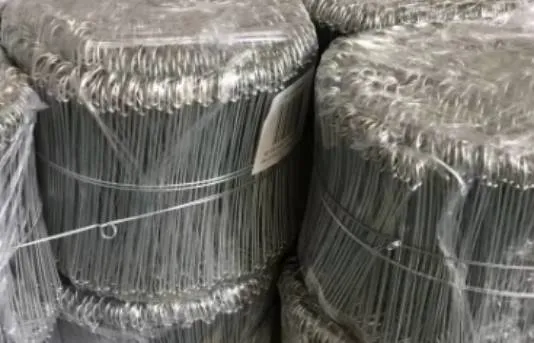-
 Phone:
Phone: -
 Email:
Email:

rebar tie wire
Understanding Rebar Tie Wire A Critical Component in Construction
Rebar tie wire, often simply referred to as tie wire, is an essential tool in the construction industry, particularly in reinforcing concrete structures. It plays a crucial role in securing rebar (reinforcing bar) in place, ensuring that concrete beams, slabs, and walls maintain their structural integrity throughout their lifecycle.
What is Rebar Tie Wire?
Rebar tie wire is typically made of low-carbon steel, which provides the necessary flexibility and strength to hold rebar securely in position. It is usually available in rolls, making it convenient for transport and use on construction sites. The wire is relatively thin, allowing for easy handling and application, yet it is robust enough to withstand the stresses imposed during concrete placement and curing.
The Importance of Rebar Tie Wire
The primary function of rebar tie wire is to secure the rebar cages used in reinforced concrete. When concrete is poured, it is critical that the rebar remains in the correct position to ensure that the structure can handle tensile stresses. If the rebar shifts, the concrete may crack or fail under load, leading to costly repairs or dangerous structural failure. Therefore, the use of rebar tie wire is essential for maintaining the precision required in modern construction.
Application Process
Using rebar tie wire is straightforward, but it requires some skill to ensure the rebar is properly secured. Workers typically cut the wire into manageable lengths before wrapping it around the intersecting points of the rebar, twisting it securely to hold the bars together. The process of tying rebar involves creating a “tie” that can withstand tension without slipping or loosening, ensuring that the rebar remains in position as concrete is poured over it.
Types of Rebar Tie Wire
There are generally two types of rebar tie wire annealed and galvanized.
rebar tie wire

1. Annealed Tie Wire This is the most common type, made from steel that has been softened through heat treatment. It is easier to manipulate and twist, making it ideal for tying rebar in various positions. Its flexibility allows for quick and efficient work, which is crucial in large construction projects.
2. Galvanized Tie Wire This wire is coated with zinc to prevent rust and corrosion. It is particularly valuable in projects where rebar may be exposed to moisture or harsh environmental conditions. While it may be slightly more rigid than annealed wire, its durability ensures that it holds up well under challenging conditions.
Benefits of Using Rebar Tie Wire
The use of rebar tie wire offers several advantages
- Cost-Effective Given its low cost, rebar tie wire is an economical choice for securing rebar. A small investment in wire can prevent disastrous structural failures, saving much larger sums in potential repairs.
- Improves Structural Integrity Properly tied rebar maximizes the strength and durability of concrete structures, ensuring that they can bear loads effectively.
- Versatile and Flexible Rebar tie wire can be used in various applications and is suitable for different shapes and configurations of rebar.
Conclusion
In summary, rebar tie wire is a fundamental component of modern construction practices. Its role in reinforcing concrete structures cannot be overstated, as it ensures that rebar is held firmly in place, ultimately contributing to the strength and longevity of buildings and other structures. As construction projects continue to evolve with increasing complexity, the importance of reliable materials like rebar tie wire remains paramount, highlighting the need for quality products in the construction industry. Proper training in the use of tie wire and an understanding of its importance can enhance safety and effectiveness on the job site, making it an invaluable skill for contemporary builders and engineers alike.
-
Wire Mesh for Every Need: A Practical SolutionNewsJul.25,2025
-
Steel Fences: Durable, Secure, and Stylish OptionsNewsJul.25,2025
-
Roll Top Fencing: A Smart Solution for Safety and SecurityNewsJul.25,2025
-
Cattle Farm Fencing Solutions for Maximum SecurityNewsJul.25,2025
-
Affordable Iron Binding Wire SolutionsNewsJul.25,2025
-
Affordable Galvanized Wire SolutionsNewsJul.25,2025
-
Wire Hanger Recycling IdeasNewsJul.25,2025








